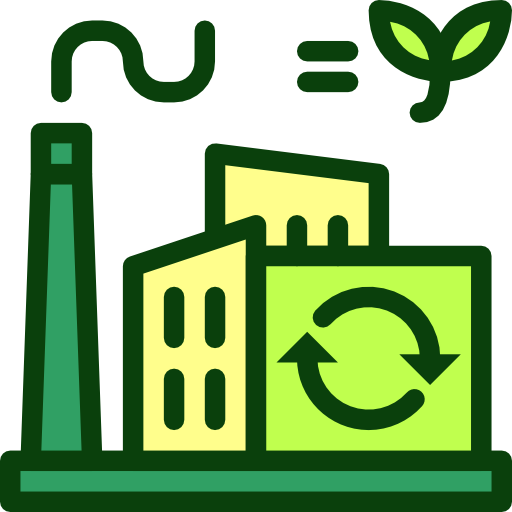Pakistan - Geography

Here, let us take a look at the Geography of Pakistan. Controls Khyber Pass and Bolan Pass, traditional invasion routes between Central Asia and India. Mother's mean age at first birth is 22.8 years (2017/18 est.) (Note: data represents median age at first birth among women 25-49), whereas, the Maternal mortality ratio is 155 deaths/100,000 live births (2023 est.)
Geographical data of Pakistan
| Location | Southern Asia, bordering the Arabian Sea, between India on the east and Iran and Afghanistan on the west and China in the north |
|---|---|
| Geographic coordinates | 30 00 N, 70 00 E |
| Map references | Asia |
| Tarrain | divided into three major geographic areas: the northern highlands, the Indus River plain in the center and east, and the Balochistan Plateau in the south and west |
| Natural Resources | arable land, extensive natural gas reserves, limited petroleum, poor quality coal, iron ore, copper, salt, limestone |
| Natural Hazards | frequent earthquakes, occasionally severe especially in north and west; flooding along the Indus after heavy rains (July and August) |
| Irrigated Land | 194,200 sq km (2022) |
| Major rivers (by length in km) | Indus river mouth (shared with China [s] and India) - 3,610 km; Sutlej river mouth (shared with China [s] and India) - 1,372 km; Chenab river mouth (shared with India [s]) - 1,086 km note: [s] after country name indicates river source; [m] after country name indicates river mouth |
| Major aquifers | Indus Basin |
| Land Boundaries | 7,257 km |
| Border Countries | Afghanistan 2,670 km; China 438 km; India 3,190 km; Iran 959 km |
| Coastline | 1,046 km |
| Climate | mostly hot, dry desert; temperate in northwest; arctic in north |
| Area | |
| Total Area | |
| Land Area | 770,875 sq km |
| Water Area | 25,220 sq km |
| comparative Area | slightly more than five times the size of Georgia; slightly less than twice the size of California |
| Maritime Claims | |
| Territorial sea | 12 nm |
| Contiguous zone | 24 nm |
| Exclusive economic zone | 200 nm |
| Continental shelf | 200 nm or to the edge of the continental margin |
| Elevations | |
| Highest point | K2 (Mt. Godwin-Austen) 8,611 m |
| Lowest point | Arabian Sea 0 m |
| Mean elevation | 900 m |
| Land Use | |
| Agricultural land | 46.6% (2022 est.) |
| Agricultural land: arable land | arable land: 39.2% (2022 est.) |
| Agricultural land: permanent crops | permanent crops: 0.9% (2022 est.) |
| Agricultural land: permanent pasture | permanent pasture: 6.5% (2022 est.) |
| Forest | 4.7% (2022 est.) |
| Other | 48.6% (2022 est.) |
Population Distribution
The Indus River and its tributaries attract most of the settlement, with Punjab province the most densely populated
People and Society
In Pakistan, the different Ethnic groups are such that we have: Punjabi 44.7%, Pashtun (Pathan) 15.4%, Sindhi 14.1%, Saraiki 8.4%, Muhajirs 7.6%, Baloch 3.6%, other 6.3%
| Population | |
|---|---|
| Pop growth rate | 1.86% (2024 est.) |
| Birth rate | 25.5 births/1,000 population (2024 est.) |
| Death rate | 5.9 deaths/1,000 population (2024 est.) |
| Health expenditure | |
| Physicians Density | |
| Hospital bed Density | 0.5 beds/1,000 population (2019 est.) |
| Total fertility rate | 3.32 children born/woman (2024 est.) |
| Gross reproduction rate | 1.62 (2024 est.) |
| Contraceptive prevalence rate | |
| Est married women (ages 15-49) | 63.5% (2023 est.) |
| Literacy | |
| Education expenditures | |
| Net Migration rate | -1.1 migrant(s)/1,000 population (2024 est.) |
| Nationality | Pakistani | Pakistani(s) |
| Languages | |
| Religions | Islam (official) 96.5% (Sunni 85-90%, Shia 10-15%), other (includes Christian and Hindu) 3.5% (2020 est.) |
| Age Structure | |
| 0-14 years | 34.4% (male 44,330,669/female 42,529,007) |
| 15-64 years | 60.7% (male 78,321,834/female 74,833,003) |
| 65 years and over | 4.9% (2024 est.) (male 5,735,294/female 6,613,764) |
| Dependency Ratios | |
| Total dependency ratio | 64.8 (2024 est.) |
| Youth dependency ratio | 56.7 (2024 est.) |
| Elderly dependency ratio | 8.1 (2024 est.) |
| Potential support ratio | 12.4 (2024 est.) |
| Median Age | |
| Total | 22.9 years (2024 est.) |
| Male | 22.8 years |
| Female | 23 years |
| Urbanization | |
| Urban population | 38% of total population (2023) |
| Rate of urbanization | 2.1% annual rate of change (2020-25 est.) |
| Major urban areas (Pop) | 17.236 million Karachi, 13.979 million Lahore, 3.711 million Faisalabad, 2.415 million Gujranwala, 2.412 million Peshawar, 1.232 million ISLAMABAD (capital) (2023). |
| Sex Ratio | |
| At birth | 1.05 male(s)/female |
| 0-14 years | 1.04 male(s)/female |
| 15-64 years | 1.05 male(s)/female |
| 65 years and over | 0.87 male(s)/female |
| Total population | 1.04 male(s)/female (2024 est.) |
| Infant Motality | |
| Total | 51.5 deaths/1,000 live births (2024 est.) |
| Male | 56 deaths/1,000 live births |
| Female | 46.8 deaths/1,000 live births |
| Life Expectancy at birth | |
| Total population | 70.3 years (2024 est.) |
| Male | 68.2 years |
| Female | 72.5 years |
| Drinking Water Sources | |
| Improved: urban | urban: 92.9% of population (2022 est.) |
| Improved: rural | rural: 89.3% of population (2022 est.) |
| Improved: total | total: 90.6% of population (2022 est.) |
| Unimproved: urban | urban: 7.1% of population (2022 est.) |
| Unimproved: rural | rural: 10.7% of population (2022 est.) |
| Unimproved: total | total: 9.4% of population (2022 est.) |
| Sanitation facility acess | |
| Improved: urban | urban: 90.5% of population (2022 est.) |
| Improved: rural | rural: 76.1% of population (2022 est.) |
| Improved: total | total: 81.5% of population (2022 est.) |
| Unimproved: urban | urban: 9.5% of population (2022 est.) |
| Unimproved: rural | rural: 23.9% of population (2022 est.) |
| Unimproved: total | total: 18.5% of population (2022 est.) |
| Alcohol consumption per capita | |
| Total | 0.04 liters of pure alcohol (2019 est.) |
| Beer | 0 liters of pure alcohol (2019 est.) |
| Wine | 0 liters of pure alcohol (2019 est.) |
| Spirits | 0.04 liters of pure alcohol (2019 est.) |
| Other alcohols | 0 liters of pure alcohol (2019 est.) |
| Tobacco use | |
| Total | 15.5% (2025 est.) |
| Male | 25.7% (2025 est.) |
| Female | 5.4% (2025 est.) |
| Child marriage | |
| Women married by age 15 | 3.6% (2018) |
| Women married by age 18 | 18.3% (2018) |
| Men married by age 18 | 4.7% (2018) |
Demographic profile
All Important Facts about Pakistan
Want to know more about Pakistan? Check all different factbooks for Pakistan below.









